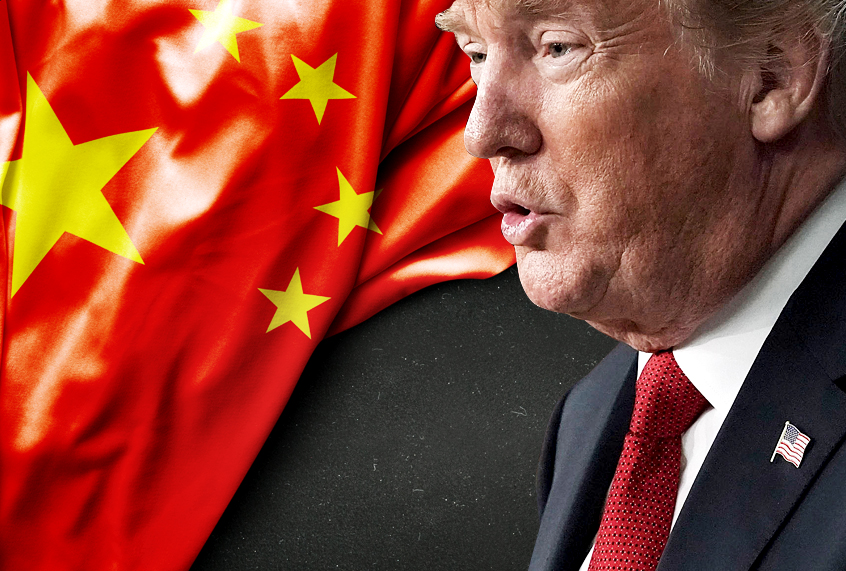The United States has reached a “very substantial phase one deal” with China in the high-stakes trade negotiations between the two economic superpowers, Donald Trump says.
But don’t look too closely. Like many of the deals announced in the White House, there may be less there than meets the eye.
Indeed, it looks as if the parties restored if not improved agricultural purchases — which may be too late for many U.S. farmers — that had more or less been in place at the start of this messy split. All the promises about ending China’s forced technology transfers from American companies were left for another day, as were promises to end Chinese currency manipulation and substantial national investments in specific technologies like 5G that Trump has called unfair.
So, the tough talk has merely postponed the tough issues.
It may even look as if Team Trump blinked first, with Trump agreeing to talk $250 billion of new tariffs off the table in return for soybean purchases that had been the case before the tariff war.
A very artful deal.
The Wall Street Journal is reporting that investors are still holding back, that the enthusiasm that Trump is projecting about the deal is illusory. It is even unclear what happens to farmers who have found replacement markets for stalled Chinese purchases.
After months of escalation, Trump compromised this week and offered a tacit embrace of something he has resisted: A partial deal that might yet grow into something more comprehensive but could take up to three separate phases of negotiations.
Phase two
It is such a good deal that “Phase Two will start almost immediately” after the first phase is signed. To questions, Trump said there was a deal because the numbers on the table were “bigger”; Chinese Vice Premier Liu He said there was a deal because there were signs of U.S. “cooperation.”
In any event, both were talking optimistically, as did the U.S. financial markets before backing down when they realized that nothing tricky had been solved.
In typical White House fashion, Trump added the obvious: He only must satisfy himself. “One of the great things about the China Deal is the fact that, for various reasons, we do not have to go through the very long and politically complex Congressional Approval Process. When the deal is fully negotiated, I sign it myself on behalf of our Country. Fast and Clean!” he tweeted, celebrating that there would be no one to actually look at the deal.
Bloomberg economics writers looked at the deal and asked aloud whether “the new grand bargain that Trump once promised with China is any more than a small step closer to reality, or that a curtain is being drawn on the uncertainty his trade wars have brought to the global economy. It also leaves a gnawing question hanging over Trump and the economic fallout from his assault on China and global supply chains as he prepares to face the electorate in 2020: Has it really all been worth it?”
The announced increase in Chinese purchases of U.S. farm products is one that was first offered by Beijing more than two years ago.
We are still supposed to believe that these purchases will be accompanied by unspecified commitments on intellectual property and currency and will go some way to repairing the damage done to U.S. agriculture since tariffs began more than 18 months ago. There, of course, was no announcement about the future of U.S. farm support payments made to offset the ruinous effect of having destroyed China as a reliable foreign market for American farms.
We can only hope that this economic package will help to calm markets over time and reduce further fears of future recession from the global slowdown that these tariff conflicts have prompted. It will keep in place the U.S. tariffs on some $360 billion in imports that have disrupted global supply chains.
Trump wants the praise
Still, even this limited deal has not yet been put on paper or signed. Trump wants trumpets and drums next month when he and China’s Xi Jinping are scheduled to meet in Chile. Don’t count on it. Officials said it will take three to five weeks to finalize the details. Past negotiations have broken down in less time than that.
Plus, the announcement comes as Trump has been weakened through impeachment talk, and there are signs of other U.S.-China troubles, ranging from the Chinese furor over an NBA executive’s backing for the growing protests in Hong Kong to the Trump administration’s invocation for the first time this week of human rights to crack down on Chinese tech companies and visas for officials.
According to Bloomberg, contours of the new deal look very similar to those negotiated by Treasury Secretary Steven Mnuchin and Commerce Secretary Wilbur Ross that were rejected by Trump over the past two years, said Wendy Cutler, a longtime former U.S. trade negotiator who now heads the Asia Society Policy Institute. “It looks more like a ‘light’ deal than a ‘substantial’ deal,” Cutler said, and remains at risk of being weakened further as negotiators put it down on paper in the weeks to come.
If there was Chinese agreement on intellectual property — the issue used to justify Trump’s tariffs — no one knows what it is. On the issue of currency manipulation, another longstanding U.S. complaint, Mnuchin said only that there had been new commitments on transparency and that the United States was willing to review its August designation of China as a currency manipulator.
The deal came with no enforcement mechanism to make sure that Beijing does not renege on its commitments. Trump would offer only that it would be worked out later.
On Capitol Hill, Sen. Charles Grassley (R-Iowa) said, “After so much has been sacrificed, Americans will settle for nothing less than a full, enforceable and fair deal with China.”


